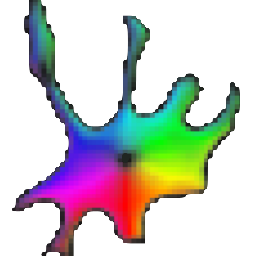Specific Use Software#
Tools on this page tend to be extremely good at certain tasks, but are less intended for a wide range of use cases. For tools with broader areas of focus, see the General Use Software page.
 Cellpose#
Cellpose#
Cellpose 35 is a segmentation algorithm, it provides a graphical user interface that allows users to use trained models or train their own using their images and annotations.
What type of image analysis problem is it best at?
Object segmentation, most trained models are for cell segmentation but could be applied to segment other similar objects
What are its disadvantages?
Its use requires some computational knowledge.
Training a new model requires manual annotation correction that can be time consuming, but is likely less time consuming than other methods of training models.
How to download/install and learn more?
 ilastik#
ilastik#
ilastik 36 is a tool for interactive image classification, segmentation and analysis. It leverages machine-learning algorithms to perform pixel and object-level classification. Using it requires no experience in image processing.
What type of image analysis problem is it best at?
It can be used for both instance segmentation and semantic segmentation. It does also perform segmentation and tracking, though with somewhat fewer tunable parameters than some other tools offer.
What are its disadvantages?
Sometimes loading or exporting images can require a bit of troubleshooting to get the dimensions correct.
ilastik is limited by your computer’s RAM so training a model with lots of features or working with very large images is likely to slow you down.
How to download/install and learn more?
 Piximi#
Piximi#
Piximi is an application for annotation and classification that runs entirely from your browser and requires no installation and minimal setup.
What type of image analysis problem is it best at?
Piximi can do image classification using machine learning
What are its disadvantages?
It is still in the developing phases and some of its proposed features are not available yet
